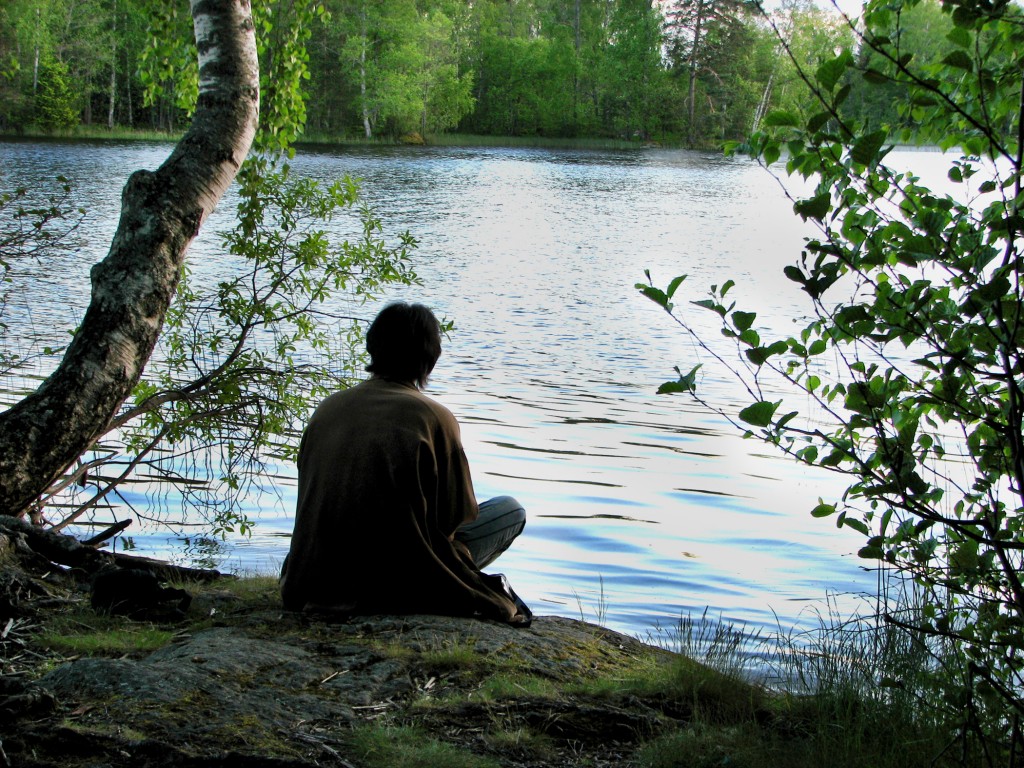
Your mind wanders to the immediate future thinking, for example, “What’s for dinner?” or the far future, thinking things like “Will we have enough money to retire?”.
When not focused on the future, you replay the past: terrible conversations with your boss/spouse, things that made you feel sad or guilty, etc.
All of these are examples of mentally living in the past or the future, rather than in the present. As a result, time flies by. Often anxiety or depression accompanies, but not always. The best way to slow down time is by living moment by moment, focusing entirely on what is before you. We do that by becoming what’s called ‘mindful.’
In addition to slowing down time, practicing ‘mindfulness’ also helps us to relax. Other articles posted discuss the importance of relaxation and stress reduction. See those for more information.
Here, let’s detail how to practice 2 mindfulness exercises:
Deep Breathing: Sit up straight but comfortably, feet on the floor. Place one hand on your abdomen near your waistline so you’ll be able to feel yourself breathe. Close your eyes (if you are comfortable doing so) to minimize distraction, and start to slow down your breathing. You want to take deep breaths so you feel your abdomen expand and push your hand out as your lower lungs fill. Typically, we have learned to breathe short shallow breaths, and this is a retraining process. As we get more oxygen in, it slows our nervous system, bringing relaxation (since we can only be ‘fast’ or ‘slow’ but not both at the same time), and helps clear our mind.
Begin to breathe in your nose to the count of 2 and exhale through your mouth to 2. Repeat 3 times. Then increase your inhalation count to 4 and gradually increase your exhalation to the count of 8 as you can.
The ‘mindful’ part is that you focus on your breath. Feel the air go in and out. Notice the sensation of the warmth. Feel your body. Scan it for areas of tension. Contract and release any muscles that are tight. As you breathe in, you may choose to silently say a word like “peace”, and on exhale, the word “cleanse.” Choose anything you like. You may use spiritual words if you want.
Stay with this for at least 2 minutes, and time yourself at first. You’ll be surprised how long that is when you’re just breathing! Try to set a reminder system to repeat this 3 times a day, and then do it more often as you can. Sneak it in whenever you can, even with eyes open, and no one will know. The more you do it, the better you’ll get at making this way of breathing a better habit, laying the foundation for more relaxation and mindful practices.
Sensory Awareness: What color is the room you’re in right now? What do you smell? What does the seat feel like that you’re sitting on (soft/rough/sinking/supportive)? What sounds do you hear? What lingering tastes are in your mouth, or are you eating now? What flavors do you taste? These are the questions to focus on as you move through your day. Use your senses to experience the changing world around you. Savor your food and drink. Really taste them. Visually notice the spaces you’re in and who’s around, instead of just going about with laser-like focus on your task at hand.
Practicing these introductory mindfulness exercises will start to slow down your days, bringing you greater relaxation and decreased anxiety.
Feel like you want to learn more about mindfulness and relaxation? COME ON IN for more skills training if you’d like additional help!

